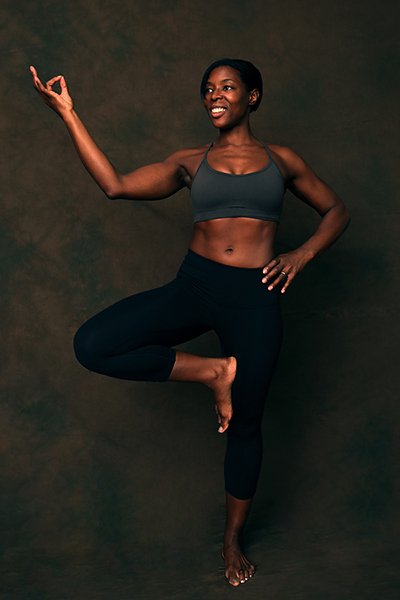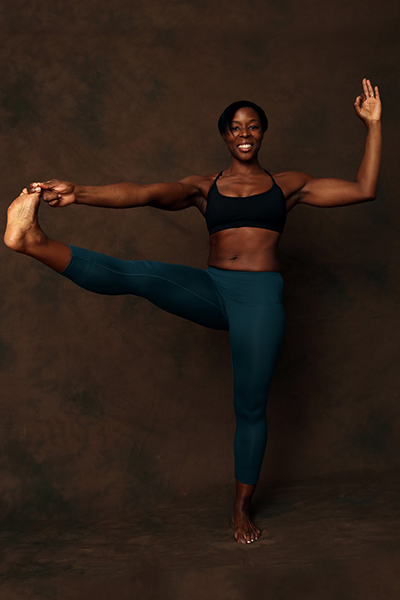It seems like the whole world has converted to Yoga. Do you feel left behind?
As we spiral deeper into a digital age of smaller, faster and “I want it yesterday!” we become further removed from our thoughts. We download, pre-programme and plug ourselves into all sorts of distractions from real life and deliberately fill our mental gaps to avoid hearing ourselves think. We spend more time interfacing than interacting and wonder why we often feel lost and confused about life.
Yoga seems to be a buzz word at the moment that means different things to different people, causing confusion as to what it really is. Some use it physically to lose weight or become stronger, others use it mentally or spiritually to quieten their mind and get to know themselves.
In fact, it is all of these objectives and more.
Yoga is a way of life, a philosophy, a guide to how to live a fulfilled life. It teaches you how to come back to yourself, to know your limits, to have courage to expand your boundaries and to truly relax into who you are.
It is like wearing an ill-fitting suit and hat. The trousers are too tight and do not allow you to walk comfortably causing physical discomfort. The jacket restricts your upper body movement and causes you to contort into shapes to create space. The tight hat causes reduced blow flow to the brain, leading to unclear thinking and headaches.
The result? Unhappiness and discontent. On the other hand, if we had a well-fitted suit and hat we could think better, feel happier and move more freely. Believe it or not, this liberated state is called yoga – the ability to feel free within ourselves. Today we spend most days hunched over computers, experience mental over load and hardly breathe. We need yoga!
Finding a moment to come back to ourselves away from the surrounding daily chaos can encourage internal re-balancing, harmony and integration. The Rt Hon Dalai Lama says that the true purpose of life is happiness. Yoga can gift this to us so that we can comfortably wear our well-fitted suit and hat contentedly.
2,500 years ago, a book called Yoga Sutras was written by Patanjali. It was the first documentation of yoga and explained how to live a fulfilled life. Yoga means to unite, join or connect and Patanjali defined yoga as chitta-vritti-nirohdah meaning the stilling of the mind when mind, body and spirit are one.
Today, many people find yoga through the portal of the physical postures, however there are other ways to access it. Patanjali described yoga as consisting of eight limbs:
– Codes of Conduct for oneself
– Codes of Conduct towards others
– Physical Practice
– Breathing Exercises
– Sense Withdrawal
– Concentration
– Meditation
– Enlightenment
The Yoga Sutras teach that by observing these practices we can gain control over our thoughts and therefore still the mind – the objective of yoga.
There are several types of yoga and each one has a particular focus with an objective to strengthen and integrate the mind and body. Here are a few of the most popular ones explained:
Hatha Yoga
In the Hindu tradition, Shiva (The Destroyer) is believed to be the founder of Hatha yoga. In the 15th century, Yogi Swatmarama penned a practice that prepared the body for deep meditation in the book Hatha Yoga Padipika. It consisted of breathing exercises and physical practice. Coupled with meditation this is Hatha yoga today and many future yoga styles place their roots here.
Iyengar Yoga
Founded by B.K.S. Iyengar, this practice is about correct alignment and using props to fit the body to the pose. Great for people with health conditions or injuries. Iyengar derives from Hatha yoga.
Ashtanga Yoga
Founded by Sri K. Pattabhi Jois, Ashtanga means eight limbs and is named after the eight limbs of yoga in the Yoga Sutras by Patanjali. It is a dynamic form of Hatha yoga with a particular focus on physical strength and flexibility for optimum health benefits.
Bikram Yoga
Bikram yoga focuses on 26 poses and two breathing exercises, in a hot room, above body temperature and at 40.6 degrees Celcius/105 degrees Fahrenheit. Its objective is to create a deeper stretch without injury and to cleanse the body of toxins whilst sweating.
Are you feeling enlightened yet about today’s confusions surrounding yoga?
It really is for everyone, teaching you how to build physical strength whilst holding the poses, stay in the present moment using the breath, raise energy levels by inhaling deeply, release toxins by exhaling completely and de-clutter/still the mind through focused thought.
When you choose your yoga make it personal and consider your objectives. If it ticks all the boxes then it’s the yoga for you. Remember, one size does not fit all!
About the Author: Nicolette Wilson, RYT200, RPYT, BSc (Hons) Health Science, Nominee for ACPTC Health Coach of the Year 2014 www.selfloveonline.co.uk /
Nicolette in yoga wear by Five Feathers Clothing

